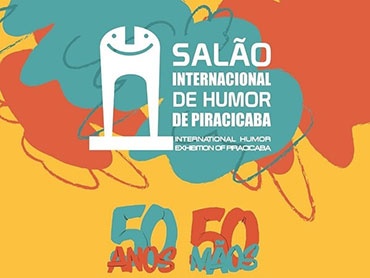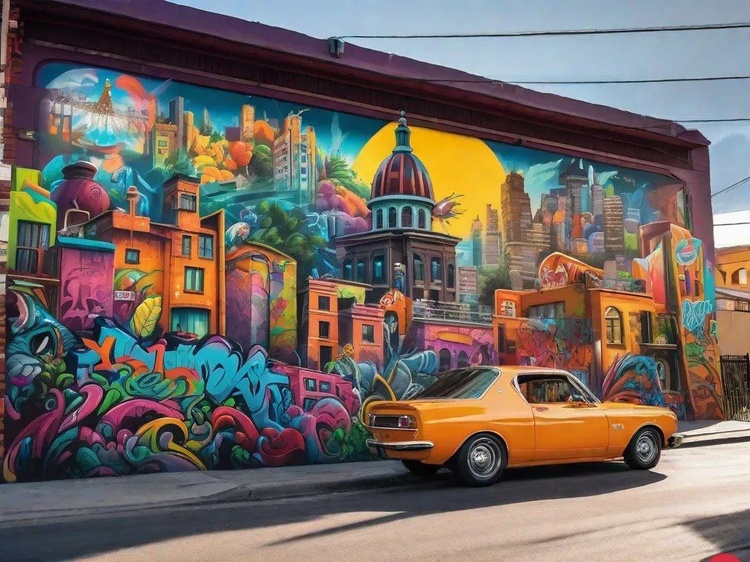
Graffiti: From the Street to the Gallery, the Evolving Urban Voice
More than just paint on a wall, graffiti is a complex cultural phenomenon. It is protest, identity, art, and transgression. Originating in the peripheries of large urban centers, it challenges traditional notions of art and property, transforming the gray landscape of cities into a vibrant public debate.
The Origins: A Signature in the City
The seed of modern graffiti, as we know it, sprouted in the 1960s and 1970s in New York City, in the United States. Influenced by the hip-hop culture that was emerging simultaneously, graffiti began in a simple and crucial way: with the "tag."
The "tag" is the stylized signature of the artist, their pseudonym or alias. It was a way of existing in a space that ignored the individual. Young people, mainly from marginalized communities, would grab spray cans and "write" their names on trains, walls, and subway stations. It was an act of affirmation: "I am here. I exist."
From this primal need to mark their presence, the language evolved rapidly. The "tag" gave way to the "throw-up" (more filled bubble shapes) and then to the "piece" (short for masterpiece). The "piece" is the most elaborate form, with complex lettering, overlays, 3D effects, use of multiple colors and characters. The street became a competitive gallery, where quality and audacity dictated respect.
The Essence: Art, Crime, or Both?
The duality is inherent in graffiti. For many, it is vandalism. Unauthorized painting of someone else's property is a crime in practically the entire world. The act of "graffitiing" carries with it the risk of fines, police persecution, and, in many cases, a social stigma.
However, for its creators and admirers, it is pure art. It is an expression free from the constraints of the art market, gallery curation, and academicism. It is a democratic art, accessible to everyone who moves through the city, without an entrance fee. Graffiti speaks of social, political, belonging, and dream issues in a direct and raw way.
The Evolution: From Abandoned Wall to Consecrated Gallery
Over time, the aesthetic and cultural force of graffiti has become impossible to ignore. Artists such as Banksy (UK), Jean-Michel Basquiat (USA), and Os Gêmeos (Brazil) were fundamental in overcoming the barrier between the street and the art world.
1. Graffiti vs. Street Art: Although the terms are used synonymously, there is a distinction. Graffiti is rooted in the culture of the tag and the piece, focusing on the stylization of letters and the affirmation of the crew (the collective of artists). Street Art is a broader umbrella term that includes stencils, posters, collages, and figurative murals, often with a more narrative or decorative intention.
2. Institutionalization: What was once marginal has found its way onto the walls of renowned art galleries and museums. Spray cans and sketches in notebooks ("blackbooks") have become collector's items. Major brands have started hiring graffiti artists for advertising campaigns, in a movement of "co-optation" by mainstream culture.
This process generates a paradox: when graffiti is accepted and paid for, does it lose its transgressive essence? For some, yes. For others, it is a natural evolution and a way to professionalize passion.
The Legacy: A Global Language
Graffiti has spread throughout the world, adapting to each cultural context. In Latin America, it has become a powerful tool for political protest and celebration of identity. In the Middle East, it is an act of courage and resistance.
He left an undeniable legacy:
• Democratization of Art: He proved that talent is not confined to fine arts schools.
• Urban Renewal: He transformed degraded areas into points of interest and tourism.
• Voice for the Invisible: He gave a visual megaphone to those on the margins of society.
Conclusion Graffiti is much more than a painting style. It is a movement, an attitude. It is the search for a place in the world, made with spray cans and a dose of courage. Its history is marked by the tension between illegality and artistic recognition, between anonymous tagging and valued signatures.
It reminds us that the city is a living space, in constant dispute, and that art, in its most authentic form, does not ask permission to be born. It simply explodes, in colors and forms, on the walls that try to contain it.
Latamarte

- December 23, 2025
AtEdge | Summer 2022
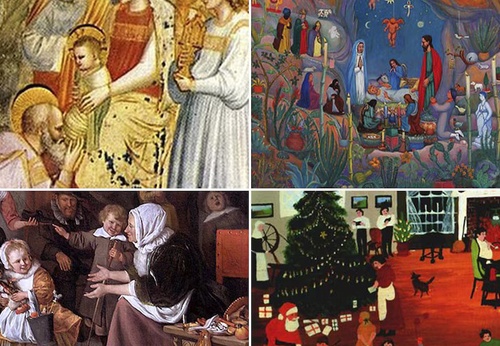
- December 23, 2025
Sacred Art Celebrates Christmas Through Its Works
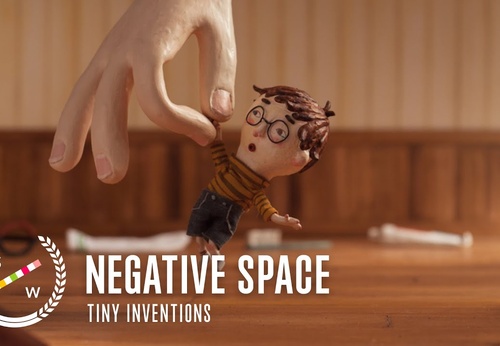
- December 23, 2025
Negative Space | Oscar Nominated Stop-Motion Animation Short Film

- December 23, 2025
Gaza's harsh winter..

- December 23, 2025
Space Drawing Perspective by Dongho Kim

- December 23, 2025
Victor Moriyama - Brazil
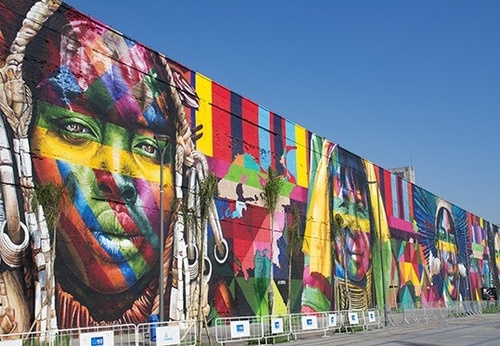
- December 23, 2025
Urban Art in Latin America
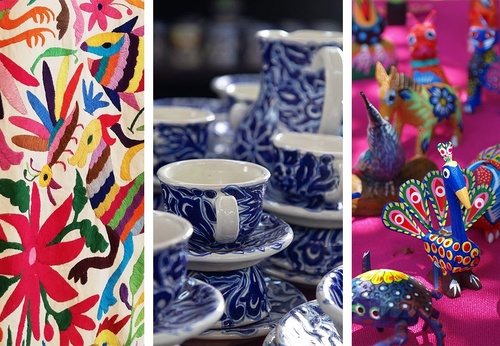
- December 23, 2025
Folk Art in Indigenous Communities of Latin America
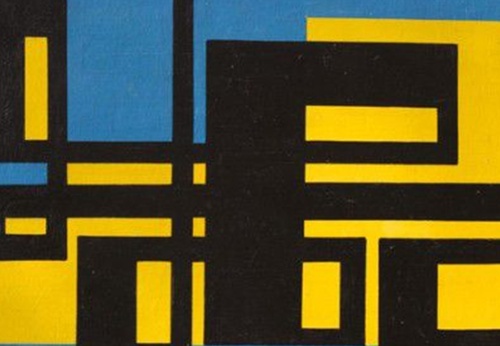
- December 22, 2025
MACA Inaugurates Exhibitions of Fontana and Uruguayan Modern Art

- December 23, 2025
Urban Art in Latin America

- December 23, 2025
Folk Art in Indigenous Communities of L…

- December 22, 2025
Graffiti as a Social and Political Lang…

- December 22, 2025
Graffiti – From the Street to Contempor…

- December 21, 2025
Contemporary Art and New Visual Narrati…

- December 21, 2025
Latin American Visual Art as a Space of…

- December 20, 2025
Painting in the Americas: Origins and E…

- December 20, 2025
Key Latin American Artists in the Anti-…

- December 18, 2025
Artistic Movements and Expressions of R…

- December 18, 2025
Art and Anti-Imperialism in Latin Ameri…

- December 17, 2025
Visual Art in El Salvador: Between Memo…

- December 17, 2025
Visual Art in Cuba: A Window to Identit…

- December 16, 2025
Visual Art in Colombia: Diversity, Memo…

- December 16, 2025
Visual Art in Venezuela: Modernity, Ide…

- December 15, 2025
Visual Art in Paraguay: Tradition, Memo…

- December 14, 2025
Visual Art in Chile: Memory, Critique, …

- December 14, 2025
Visual Art in Bolivia: Ancestry, Resist…

- December 13, 2025
Visual Art in Peru: Ancestral Tradition…

- December 13, 2025
Visual Art in Argentina: Identity, Memo…

- December 11, 2025
The Visual Arts in Mexico: Between Myth…

- August 29, 2023
The history of Bolivian art

- February 19, 2024
Analysis and meaning of Van Gogh's Star…

- January 28, 2024
Culture and Art in Argentina

- September 25, 2023
What is the importance of art in human …

- September 23, 2023
What is paint?

- August 23, 2023
The 11 types of art and their meanings

- August 10, 2023
14 questions and answers about the art …

- September 23, 2023
Painting characteristics

- August 30, 2023
First artistic manifestations

- January 12, 2024
10 most beautiful statues and sculpture…

- September 23, 2023
History of painting

- March 26, 2024
The importance of technology in art1

- March 26, 2024
Cultural identity and its impact on art…

- July 13, 2024
The impact of artificial intelligence o…

- April 07, 2024
Graffiti in Latin American culture

- April 02, 2024
History visual arts in Brazil

- August 16, 2023
The 15 greatest painters in art history

- April 06, 2024
History of visual arts in Ecuador

- October 18, 2023
History of sculpture

- November 21, 2024
The Role of Visual Arts in Society

- February 19, 2024
Analysis and meaning of Van Gogh's Star…

- August 13, 2023
9 Latino painters and their great contr…

- August 23, 2023
The 11 types of art and their meanings

- August 10, 2023
14 questions and answers about the art …

- August 27, 2023
15 main works of Van Gogh

- August 29, 2023
The history of Bolivian art

- January 28, 2024
Culture and Art in Argentina

- November 06, 2023
5 Latin American artists and their works

- September 23, 2023
Painting characteristics

- September 23, 2023
What is paint?

- September 25, 2023
What is the importance of art in human …

- March 26, 2024
Cultural identity and its impact on art…

- August 30, 2023
First artistic manifestations

- December 18, 2023
10 iconic works by Oscar Niemeyer, geni…

- January 20, 2024
What is the relationship between art an…

- January 12, 2024
10 most beautiful statues and sculpture…

- August 24, 2023
The most famous image of Ernesto "Che" …

- October 30, 2023
Characteristics of Contemporary Art

- May 26, 2024
Técnicas de artes visuais

- August 22, 2023

